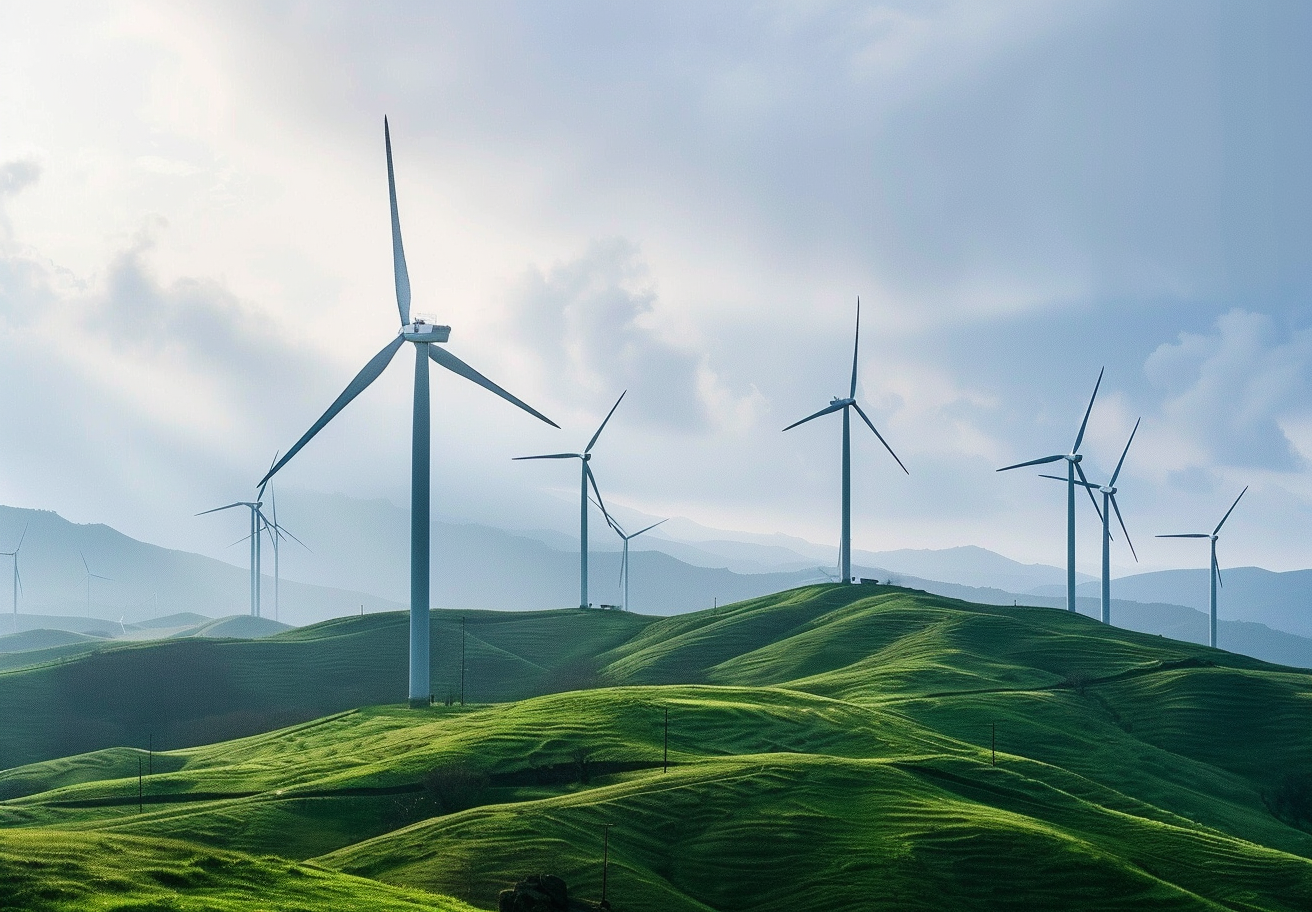Rare earth elements (REEs) are critical elements in the majority of renewable energy technologies due to their unique chemical characteristics. Their use has escalated as the globe transitions to clean energy sources. Six of the most important applications of REEs in the renewable energy sector are identified below, describing their significance and impact.
Wind Turbines are one of the most significant applications of REEs, particularly to generate wind energy. The production of wind turbines relies on REEs, including neodymium, praseodymium, dysprosium, and terbium, which are used to make high-strength permanent magnets. These magnets play a vital role in the direct-drive turbines preferred for their efficiency and reliability against gear-driven counterparts.
The use of REEs in wind turbines increases their efficiency by enabling them to generate more powerful and compact magnets. This results in the turbines generating more electricity from the same amount of wind, meaning that wind energy becomes a more efficient and sustainable form of renewable power. With the increasing application of wind power all over the globe, demand for REEs will increase significantly, meaning that there will be a demand for a sustainable and secure supply chain.

Electric vehicles (EVs) are another major application of REEs, particularly in motors. Neodymium-iron-boron (NdFeB) magnets are utilized extensively in EV motors due to their high magnetic qualities and resistance to demagnetization. These attributes are crucial to the performance and efficiency of EVs in being capable of attaining higher velocities and traveling longer distances on one battery charge.
The transition towards electric mobility is a significant element in global efforts to reduce greenhouse gas emissions and combat climate change. The use of REEs by the automotive industry, thus, is increasing rapidly. Companies like Tesla, BMW, and Renault are investing heavily in the development of more efficient EV motors from these critical materials.
Rare earth elements also play a pivotal role in the production of solar panels, specifically thin-film solar cells. Elements such as dysprosium and cerium are utilized to improve the efficiency and durability of these cells. Thin-film solar cells are known for their lightweight and flexible properties, making them suitable for a wide range of applications, from rooftop installations to portable solar chargers.
The incorporation of REEs in solar panels helps in enhancing the photovoltaic conversion efficiency, which is the rate at which sunlight is converted into electricity. This improvement is vital for increasing the overall output of solar energy systems and making them more cost-effective. As the adoption of solar energy continues to rise, the importance of REEs in this sector becomes increasingly apparent.

Energy storage devices and, most significantly, new-generation batteries are critical to balancing energy supply and demand in renewable energy systems. REEs are key to the manufacture of these batteries, e.g., lithium-ion batteries, being used heavily across applications from electric vehicles to grid storage.
Lithium-ion batteries are improved through the addition of REEs like lanthanum and cerium, which act to enhance their energy density, lifespan, and safety. These improvements are crucial to ensuring that renewable energy can be stored efficiently and reliably, providing a stable power supply even when the sun isn't shining or the wind isn't blowing. The importance of renewable energy storage products is growing, and with it, the demand for REEs for renewable energy storage is increasing.
Green hydrogen production by electrolysis utilizes REEs in different parts of electrolyzers. Electrolyzers are machines that split water into hydrogen and oxygen by applying electricity, and REEs make them more efficient and long-lasting.
REEs like yttrium and cerium are utilized in the membranes and catalysts of electrolyzers, making them work more efficiently and consuming less energy. Provision of green hydrogen constitutes the core of the hydrogen economy, which aims at utilizing hydrogen as a clean energy carrier for diversified applications, from fuel cells to industrial processes. Better electrolyzers with the help of REEs are pivotal to ushering in the widespread application of hydrogen as a renewable energy carrier.
Even though not a direct technology of renewable energy, catalytic converters that rely on REEs like cerium are vital in lowering emissions from engines. The converters help break down harmful pollutants in exhaust gases to less harmful components, reducing damage to the environment.
The use of REEs in catalytic converters is part of a broader effort to advance energy efficiency and reduce environmental contamination. As the world proceeds towards cleaner sources of energy, technology that cuts down on the environmental impact of the existing combustion engines remains relevant. The utilization of REEs closes the gap between existing energy systems today and renewable energy technologies tomorrow.
Rare earth elements are key to the development and utilization of renewable energy technology. Their properties allow the production of efficient solar panels, electric vehicles, wind turbines, energy storage devices, catalytic converters, and hydrogen production. As the world moves towards cleaner and renewable energy, the importance of securing a stable and sustainable source of REEs cannot be overstated. Industry actors like Stanford Materials Corporation (SMC) play a critical role in providing these critical materials and developing them. Through recycling, manufacturing substitute materials, and international cooperation, the threats posed by REEs can be overcome to enable the world to switch to clean energy.
References
Eric Loewen
Eric Loewen graduated from the University of Illinois studying applied chemistry. His educational background gives him a broad base from which to approach many topics. He has been working with topics about advanced materials for over 5 years at Stanford Materials Corporation (SMC). His main purpose in writing these articles is to provide a free, yet quality resource for readers. He welcomes feedback on typos, errors, or differences in opinion that readers come across.